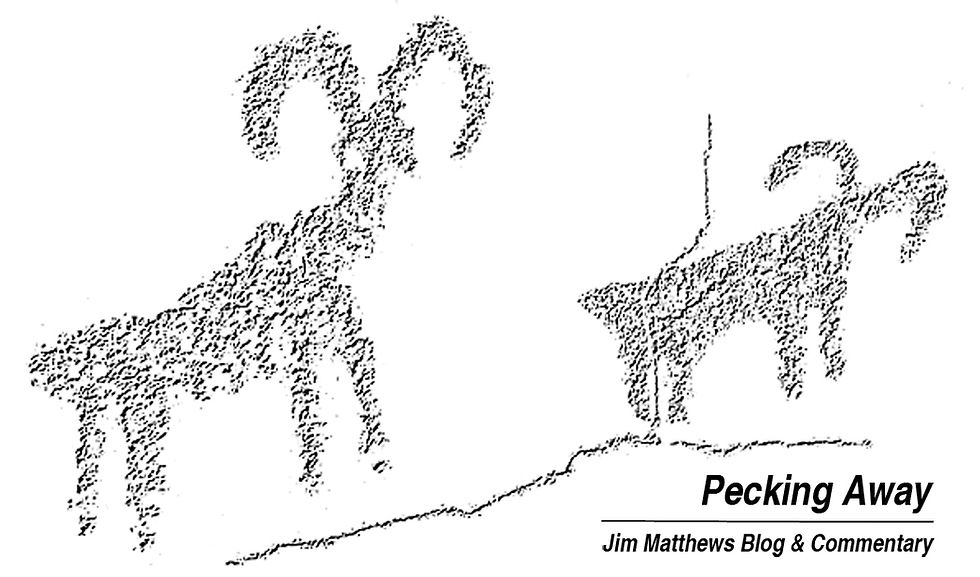Lake Palmdale opener the Mardi Gras of fishing in Antelope Valley
- Jim Matthews
- Feb 6, 2018
- 4 min read

By JIM MATTHEWS
www.OutdoorNewsService.com
“It’s the Mardi Gras of trout fishing in the Antelope Valley.”
At least that’s what Willie Mays, owner of Amayzing Fishing Bait and Tackle in Lancaster, calls the season opener at Lake Palmdale, a local fishing lake only open to Palmdale Fin and Feather Club members and their guests.
By 5 p.m. Saturday afternoon, Ed Hall, president of the Fin and Feather Club, said “it was the best turnout we’ve had here in years. My ballpark guess was that we had at least 1,500 to 1,600 people here today.”
Hall said he thought well over 1,000 trout were landed, including a lot of seven, eight, and nine pounders. Mays thought the number of fish caught was a few magnitudes higher, “in the several thousands.”
“It was explosive. I could have limited out in five casts,” said Mays, who hooked a 10-pound class rainbow trout on his first cast that he broke off at the boat. Adjusting his drag, he proceeded to land trout at seven, six, and five pounds on his next three casts. Mays ended up with a five-fish, 25-pound limit. May’s fishing partner Anthony Barton, also of Lancaster, had a five-fish limit that included an eight-pound trout.
The numbers of trout landed from the 586-acre lake doesn’t seem a stretch. Prior to Saturday’s opening day, there were a total of 22,000 pounds of rainbow trout planted, including 500 pounds of Lightning Trout (a golden color-phase of rainbow trout with a brilliant crimson stripe along its sides). There will be a total of 70,000 pounds planted this fishing season.
Stephanie Staub, Fin and Feather Club office manager, said the line to get in to fish opening morning started to form on Thursday night and by the times the gates swung open 30 minutes before sunrise Saturday morning, there were well over 200 cars in line with vehicles backed all the way up 5th Street East to East Avenue S and then west to the Highway 14 offramp.
Hill said there were tailgate parties Friday night, and Mays said “you could smell barbecue all over the place.”
For more information on the Palmdale Fin and Feather Club or for an update on the fishing, call 661-947-2884 or got to www.palmdalefinandfeatherclub.com. They also have a Facebook page with photos of Saturday’s catches.
Mojave River Hatchery reopens
to public after major renovation
The Mojave River Hatchery in Victorville has reopened to public visitation and trout plants from fish reared at the facility will begin soon. The hatchery had a complete overhaul that made for more efficient trout production over the past eight months.
The Department of Fish and Wildlife invested “several hundred thousand dollars on the project,” which included an extensive list of upgrades:
-- Pressure washing and disinfecting 6,000 linear feet of fish rearing ponds and associated plumbing;
-- Coating all fish-rearing surfaces with Food and Drug Administration-approved epoxy coating to improve conditions for rearing trout;
-- Installing new manifolds for the water recirculation loop to improve efficiency;
-- Upgrading plumbing from the main hatchery building;
-- Completely refurbishing the well pump motors; and
-- Excavating and installing a new, UV-resistant rubber lining to the two settling ponds on the facility.
The upgrade will allow consistent and reliable trout rearing the planting from the facility, which had been closed since May 1. Hatchery production resumed here earlier in January with juvenile fish brought in from other hatcheries in the state system, and the first of those fish will be of the correct size to begin plants late this month.
In addition, millions of fertile trout eggs are also being shipped to Mojave for incubation and rearing into catchable fish for stocking later in 2018.
The last major renovations to Mojave River Hatchery took place more than 45 years ago.
Report evaluates, critiques the
white seabass hatchery program
A report evaluating and critiquing the Department of Fish and Wildlife’s white seabass Ocean Resources Enhancement and Hatchery Program was released this past week.
The OREHP was created in 1983 by the legislature to conduct research into the restoration and enhancement of marine fish species for both commercial and sportfishing. White seabass off the Southern California coastline became the focus of the initial program, which included a hatchery operated by Hubb-SeaWorld Research Institute and 10 grow-out pens operated by volunteers along the coast.
The bottom line was that the white seabass hatchery-grow out program contributed less than .3 percent to the fishery, and the survival of the hatchery fish was poor. Overall, the effort contributed insignificantly to white seabass stocks off the coast. The report was also critical of the program’s gaps in data, genetic tracking, lack of public transparency, and unmet objectives and goals.
The report did point out the volume of scientific information gleaned has been significant, and recommended a litany of improvements as the program moves forward.
A copy of the entire report is available on the Department of Fish and Wildlife. It is titled, “Evaluation of the Ocean Resources
Enhancement and Hatchery Program.”
The DFW will conduct public scoping meetings in Southern California to receive comments on the evaluation and discuss potential next steps for the OREHP in early 2018.
END



















